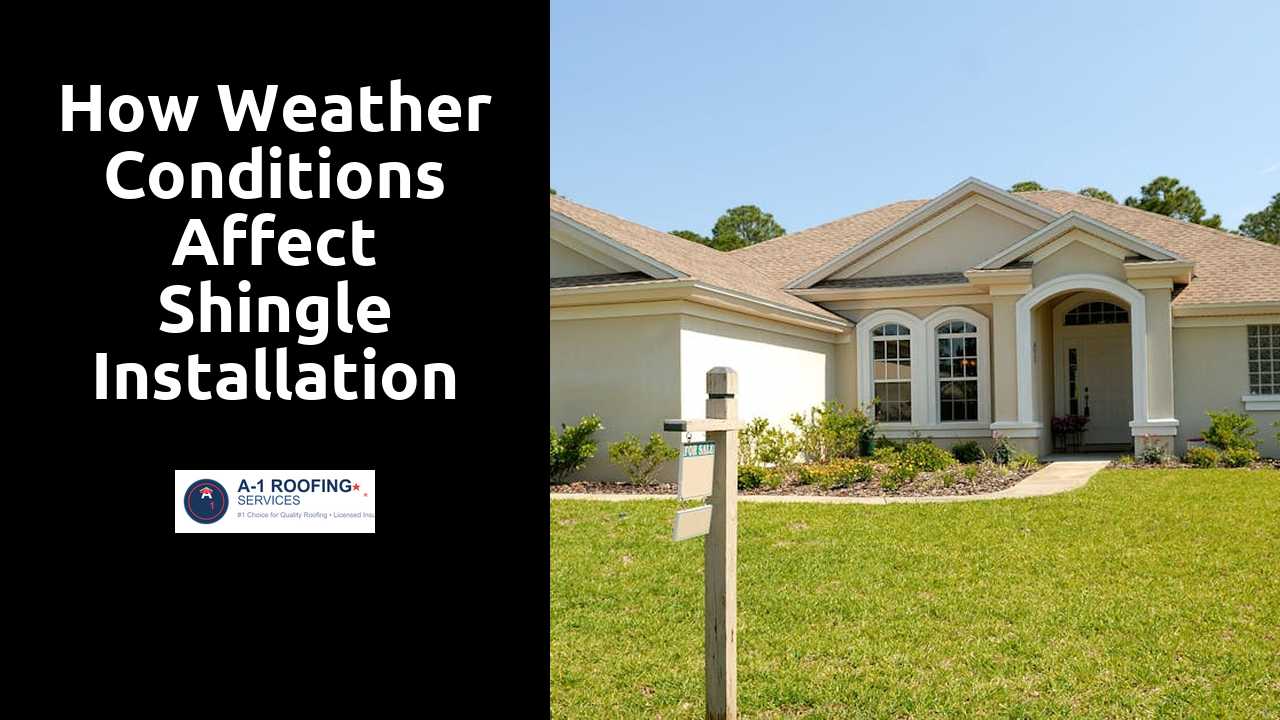
How Weather Conditions Affect Shingle Installation
Table Of Contents
Wind Conditions and Their Effects on Shingle Installation
Wind can significantly impact the process of shingle installation, making it more challenging and potentially compromising the durability of the roof. High winds may cause shingles to lift prematurely, preventing them from adhering properly to the roof deck. This scenario can lead to gaps, exposing the underlying material to moisture and debris, which may result in leaks or further damage over time. Installers must be particularly vigilant when forecasts predict strong gusts, as securing shingles in such conditions becomes critical to ensure a proper fit.
Additionally, installers often need to adjust their techniques when working in windy environments. For example, they may choose to work with smaller sections at a time to prevent large sheets of shingles from being blown away. Using specialized fasteners or adhesives can also help keep shingles secure during installation. Adapting strategies to counteract wind forces is essential for maintaining quality and longevity in roofing projects.
View this external resource for great tips and advice.
Installation Challenges During Windy Days
Wind can pose significant challenges during shingle installation, creating safety hazards for workers. Strong gusts can easily lift shingles, making it difficult to maintain proper positioning. This adds complexity to the installation process, requiring extra caution and potentially slowing down progress on the project. Ensuring that the work area is safe and organized becomes crucial in maintaining efficiency while managing these risks.
Additionally, the pressure from wind can impact the adhesion of shingles to the roof surface. Even if the shingles are placed correctly, wind can compromise their ability to stick, leading to potential leaks in the future. Installers may need to use specific techniques or materials designed for windy conditions, which adds to the overall preparation and cost of the project. Careful attention to local weather forecasts can help teams plan their installation days more effectively.
Rain and Its Influence on Shingle Installation
Rain presents significant challenges for shingle installation, impacting both the quality of the job and the safety of the workers. When shingles are wet, their adhesive properties can be compromised, leading to poor sealing and potential leaks over time. Furthermore, the risk of slipping increases on rain-soaked surfaces, making it crucial for installers to take extra precautions to ensure their safety while on the roof.
Wet conditions can also hinder the effectiveness of the installation process. Water accumulation can lead to issues such as mold growth and structural damage if not addressed promptly. Additionally, installing shingles during or shortly after rainfall can result in a less aesthetically pleasing finish. Proper planning and scheduling are essential to mitigate the risks associated with rain, ensuring a reliable and durable roofing solution.
Wet Conditions and the Risk of Damage
Exposure to rain during shingle installation can lead to several issues that compromise the integrity of the roofing system. Moisture can interfere with adhesive bonds, causing shingles to slip or fail to adhere properly. Additionally, the roof deck may become slippery and hazardous, increasing the likelihood of accidents for installers. Wet shingles are also more prone to tearing and damage, which can result in increased costs for repairs or replacements.
Furthermore, installing shingles in wet conditions can lead to long-term issues such as mold and mildew growth. Even after the initial installation, trapped moisture can weaken the roofing materials over time, leading to leaks and structural damage. It is crucial for contractors to evaluate weather forecasts and plan installations accordingly to avoid the pitfalls associated with wet conditions. Proper precautions must be taken to ensure that both the safety of workers and the quality of the installation are not compromised.
Snow and Ice
Winter weather presents unique challenges for roofing teams attempting to complete shingle installations. Snow and ice create slippery surfaces, making it hazardous for workers to maneuver on rooftops. Additionally, accumulated snow can obscure the roof's true condition, hiding areas that require repair before new shingles are laid. The presence of ice can also lead to dangerous icicles, increasing the risk of accidents during installation.
Cold temperatures can severely impact the materials used in shingles. Many shingles become brittle and less flexible, which complicates proper sealing and placement. Moreover, the adhesives used for bonding shingles may not work effectively in frigid conditions. As a result, installers must adopt careful techniques to ensure both safety and material integrity when working in adverse winter weather.
Strategies for Working in Winter Conditions
Working in winter conditions requires careful planning and execution to ensure the integrity of the shingle installation. It is advisable to choose specific days, such as those with warmer temperatures, to perform installations. Tools that can help minimize the impact of cold weather include heated tarps and thermal blankets, which can warm the shingles and make them more pliable. Crews should also be equipped with proper clothing to maintain warmth and mobility on the job site, ensuring safety and efficiency.
Communication among team members becomes crucial during winter projects. Check-ins can prevent missteps that could lead to damage or rework due to icy surfaces or unstable ladders. Employing a thorough pre-installation assessment can reveal potential hazards imposed by snow and ice. Additionally, prioritizing a detailed installation plan can help outline necessary adjustments that may need to be made as conditions change throughout the day.
Related Links
Shingle Installation for Steep-Slope RoofsUnderstanding Shingle Exposure and Overlap